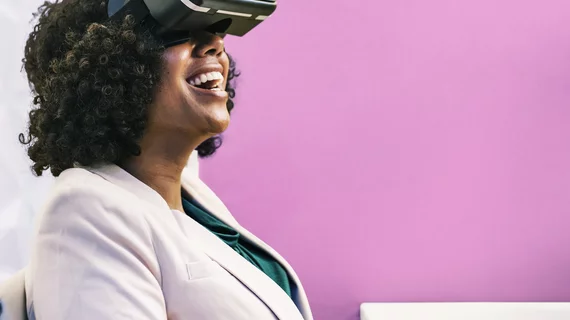Competing realities: AR on way to surpassing VR in healthcare space
Both virtual reality (VR) and augmented reality (AR) are on their way to playing key roles in the delivery of healthcare. VR has typically been the more popular technology of the two, but a new report from GlobalData suggests AR may end up having the brighter future.
“In the healthcare space, VR technology has been used for many years to train surgeons for high-risk invasive procedures, but the high cost, size, and complexity of VR surgical simulators has generally restricted their widespread use,” Roxanne Balfe, MSc, digital healthcare analyst for GlobalData, said in a prepared statement. “While AR has experienced a slower adoption, due to technical complexities such as battery life and user interface, as well as wearing comfort, it is steadily gaining traction.”
The wearable VR market was worth nearly $7 billion in 2018 and is expected to grow at a compound annual growth rate (CAGR) of 13%, according to GlobalData’s report. The market for AR, meanwhile, was worth $4 billion in 2018—but is expected to grow at a CAGR of 24%. If those calculations held steady, the AR market would be worth much more ($76 billion) than the wearable VR market ($28 billion) by the year 2030.
Balfe noted that a crucial advantage for AR is that it allows the user to remain “in touch with their surroundings.” VR, meanwhile, transports the user to another reality altogether.
Ultimately, of course, both technologies appear destined to grow in the years ahead.
“From a consumer perspective, the ease of downloading an app remotely that can assist in recovery or the delivery of healthcare has untold value; and from a wider view, augmented and virtual realities promise to contribute to the tech-assisted transformation currently underway in healthcare,” Balfe said in the same prepared statement.

